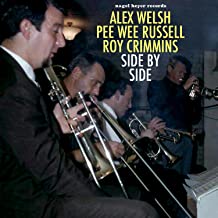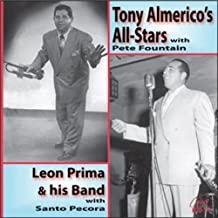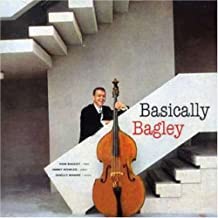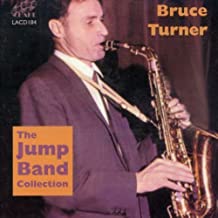
Daily Dose Of Jazz…
Roy Crimmins was born in London, England on August 2, 1929. Originally self-taught, he was later mentored by the American bass trombonist with the Philarmonia Orchestra, Ray Premru, and the then Ted Heath principal trombonist, Don Lusher. He turned professional when he joined the Mick Mulligan band in 1952.
Collaborating with Alex Welsh in 1954, the pair started their own band and recorded with American guest stars such as the clarinetist Pee Wee Russell and Wild Bill Davison. For the next decade they performed until Roy moved to Germany in 1965 where he kept a consistent line-up and a regular group. Residing in Switzerland from 1970 until 1977 he formed his own band under the pseudonym Roy King and recorded three albums.
Touring Europe extensively during this era, he had his own television show in Vienna, Austria for five years. The late 1970s saw Crimmins returning to England and working once again with Welsh until he died in 1982. In the mid-1980s he was approached to join his Benny Goodman and Duke Ellington orchestras,interpreting the original Lawrence Brown, Tricky Sam Nanton and Juan Tizol trombone solos. He performed at the Nice and North Sea Jazz Festivals.
As an advisor to the Mayor of Eilat, Israel, his involvement in this venture led to the renowned Red Sea Jazz Festival. Soon after, Roy and his family moved to Tel Aviv, Israel where he established the Israel Jazz Ensemble, and was commissioned by Musica Nova to write a concerto, which premiered in the Tel Aviv Museum of Art to great acclaim. His music is still broadcast regularly.
Trombonist, composer and arranger Roy Crimmins, whose career spanned over fifty years, passed away on August 27, 2014 at the age of 85. He is buried on a hill overlooking the Sea of Galilee.
More Posts: arranger,composer,history,instrumental,music,trombone

Daily Dose Of Jazz…
Leon Prima was born on July 28, 1907 in New Orleans, Louisiana, the older brother of singer Louis Prima. Starting on piano before learning the trumpet, his early jobs were with Ray Bauduc, Leon Roppolo, Jack Teagarden, and Peck Kelley (during the Roaring Twenties. He and Sharkey Bonano led the group the Melody Masters in the late 1920s and early 1930s.
From 1940 to 1946 a move to New York City saw Leon playing in his brother’s big band. After returning to New Orleans, he led his own ensemble and managed more than one nightclub. Then in 1955 he retired from music and made a career for himself in real estate. Trumpeter Leon Prima, who owned the 500 Club on Bourbon Street in New Orleans, passed away on August 15, 1985.
More Posts: bandleader,history,instrumental,jazz,music,trumpet

Daily Dose Of Jazz…
Claude Luter ws born on July 23, 1923 in Paris, France the son of a professional pianist and studied the instrument with his father before moving to the clarinet in his teens. Seduced by jazz, he abandoned his training as a naval architect, although he retained an interest in sailing and later qualified as a private pilot. He went on to take clarinet lessons from a pit orchestra player, and pursued his passion for jazz by following the Claude Abadie band around Paris’s Latin Quarter clubs in the late 1930s, sometimes acting as a helpmate to the band’s frail trumpeter, the writer Boris Vian, with whom he made his debut on record in 1944.
Encountering trumpeters Pierre Merlin and Claude Rabanit, who became key members of his first band in 1946. Already recording as Claude Luter et Ses Orientais for the French Swing label, Luter and company moved over to the Vieux Colombier, popular with the existentialist crowd. He began a friendship with the trumpeter’s New Orleans-born clarinetist, Barney Bigard, a connection later cemented on record.
Among Luter’s principal influences was soprano saxophonist Sidney Bechet. As luck would have it, Bechet made concert appearances in Paris in 1949 and was teamed with Luter’s down-to-earth trad band at the Salle Pleyel. He also sat in with them at the Vieux Colombier, beginning an association that endured after Bechet settled permanently in France.
Luter later visited New Orleans, Louisiana a number of times, recorded there and took part in the centenary celebrations of Bechet’s birth. He also attended the tribute concert for Louis Armstrong’s 70th birthday in Los Angeles, California in 1970. Clarinetist Claude Luter, who doubled on soprano saxophone, passed away on October 6, 2006 in Paris at the age of 83.
More Posts: bandleader,clarinet,history,instrumental,jaz,music

Daily Dose Of Jazz…
Donald Neff Bagley was born on July 18, 1927 in Salt Lake City, Utah. He received formal training on the double bass, and studied in Los Angeles, California. He played in 1945 with Shorty Sherock and Wingy Manone, and in 1948 with Dick Pierce.
From 1950 to 1953, and sporadically thereafter, Bagley played with Stan Kenton and during his time with Kenton, A Study for Bass by Bill Russo and Bags by Bill Holman were written to feature his playing. Beginning in 1954, he fronted his own ensembles. Between 1950 and 1952, he worked extensively as a session musician with Nat King Cole, Maynard Ferguson, and Dexter Gordon. In the middle of the 1950s, he played in Europe with Zoot Sims, Lars Gullin, Frank Rosolino, and Åke Persson.
From 1956 to 1967, he returned to Kenton and worked with Les Brown. Toward the end of the 1950s he played with Jimmie Rowles, Shelly Manne, and Phil Woods. Don played with Pete Fountain, did a session with Ben Webster, and performed in Japan with Julie London. In the 1970s and 1980s, Bagley composed and arranged for film and television. Between 1976 and 1984, he worked with Burt Bacharach.
Double bassist Don Bagley, who recorded three albums under his own name, passed away on July 26, 2012 at the age of 85.
More Posts: bandleader,bass,history,instrumental,music

Daily Dose Of Jazz…
Bruce Turner was born on July 5, 1922 in Saltburn, North Yorkshire, England and educated at Dulwich College. He learned to play the clarinet as a schoolboy and began playing alto saxophone while serving in the Royal Air Force in 1943 during World War II. He played with Freddy Randall from 1948~53 and then worked on the Queen Mary in a dance band and in a quartet with Dill Jones and Peter Ind.
In 1950 he briefly studied under Lee Konitz in New York City. His first period with Humphrey Lyttelton ran from 1953 to 1957. After leaving Lyttelton he led his Jump Band from 1957~65, which was featured along with his arrangements in the 1961 film Living Jazz. In 1961, Turner recorded Jumpin’ at the NFT (National Film Theatre) and the album was issued later that year on Doug Dobell’s 77 Records label, coinciding with the film’s release.
In January 1963, the British music magazine New Musical Express reported that the biggest trad jazz event to be staged in Britain had taken place at Alexandra Palace. The event included George Melly, Diz Disley, Acker Bilk, Chris Barber, Kenny Ball, Ken Colyer, Monty Sunshine, Bob Wallis, Alex Welsh, Mick Mulligan and Turner.
Returning to Randall’s group from 1964 to 1966, he then played with Don Byas and Acker Bilk till 1970. He went on to work with Wally Fawkes, John Chilton, Stan Greig), Alex Welsh, and Dave Green. He led small ensembles in the 1990s until his death. His autobiography Hot Air, Cool Music, published by Quartet Books, appeared in 1984. He wrote a column on jazz for the Daily Worker. Saxophonist, clarinetist, and bandleader Bruce Turner passed away on November 28, 1993 in Newport Pagnell.
More Posts: clarinet,history,instrumental,jazz,music,saxophone



